At Ponds by Michael Wheat, we know crystal-clear, healthy water doesn’t happen by chance; it starts with regular testing. Whether you’re just starting out or have years of experience, testing your water regularly helps you stay one step ahead of problems like algae blooms or fish stress.
By checking key levels like pH, ammonia, nitrite, and oxygen, you get a clear picture of your pond’s health. It doesn’t have to be complicated either. From simple test strips to digital meters, there’s a method to suit every pond owner.
In this guide, we’ll walk you through how to test pond water, what to look out for, and how to keep things balanced all year round.
How to Test Pond Water – Step by Step
Keeping your pond water healthy doesn’t have to be complicated. With the right test kit and a few easy checks, you’ll stay on top of things before any major issues crop up.
Here’s how we recommend you test your pond water:
1. Choose the Right Test Kit

Different ponds have different needs. If you’ve got a fish pond or koi pond, make sure your kit can test for the basics – pH, ammonia, nitrite, and nitrate. A good all-round kit will usually include these and possibly tests for hardness (KH and GH) and phosphate levels too.
Having a decent filtration system also helps keep things stable, but even with one, regular testing is a must.
2. Take a Sample Properly
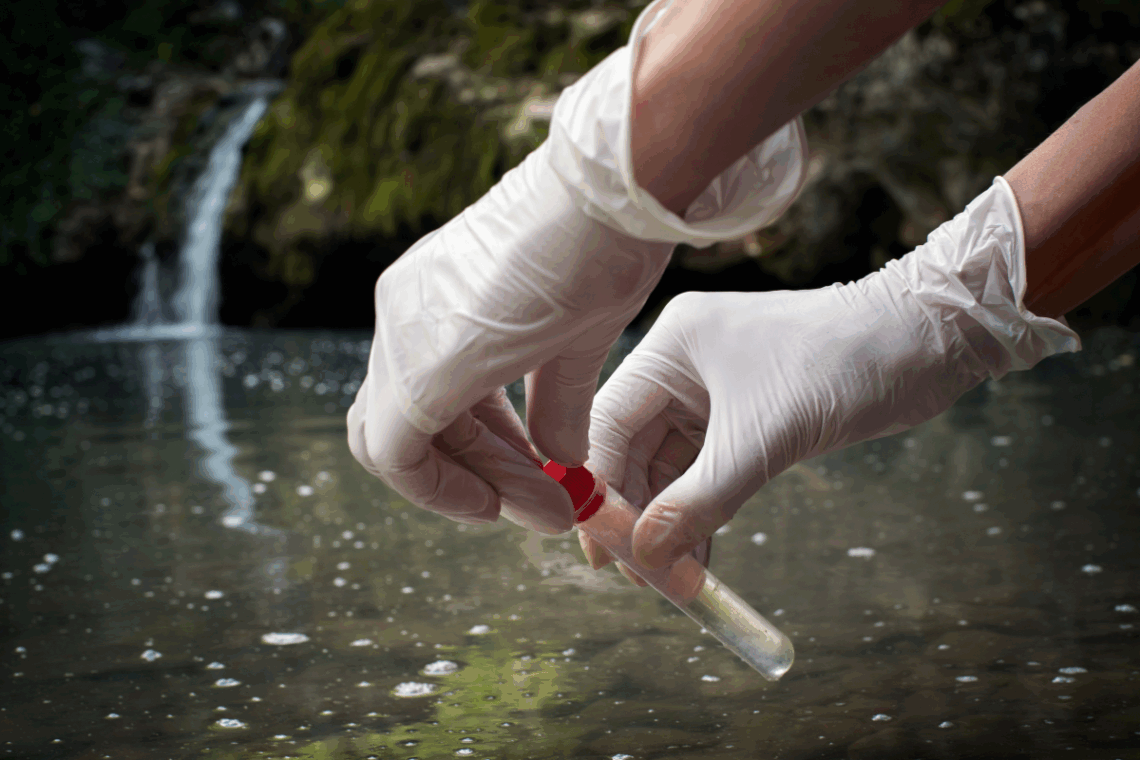
Follow the instructions that come with your kit. Usually, you’ll collect some pond water in a test tube or container, then add the testing liquid (reagent). Some kits use test strips instead, just dip them in the water and wait for the colour change.
For the most accurate results, make sure your pump and waterfall are running while you test. Water needs to be circulating properly, otherwise, readings might be off.
3. Read and Compare Your Results
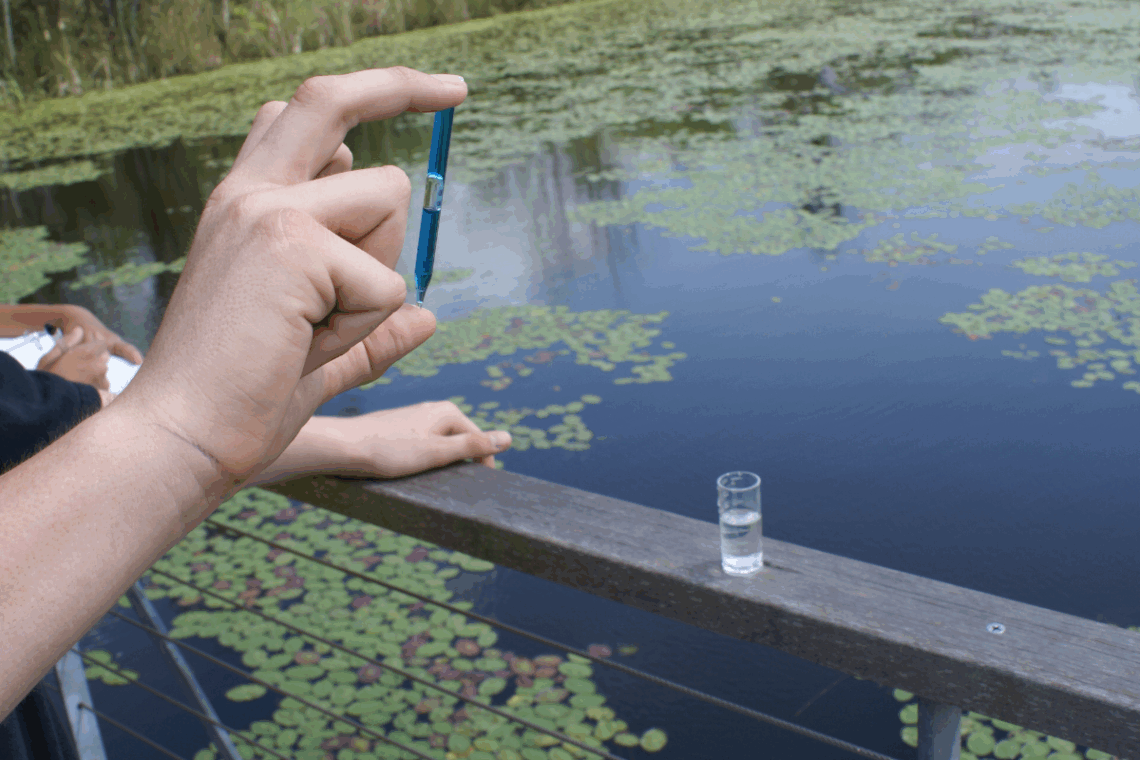
Once the test is done, compare the colour or reading to the chart provided in the kit. This tells you whether your water is in a safe range or if there are any water quality issues like high levels of ammonia or a pH imbalance.
If something’s off, don’t panic. You might just need to change feeding schedules to prevent overfeeding or clean out some plant debris.
4. Keep a Testing Routine
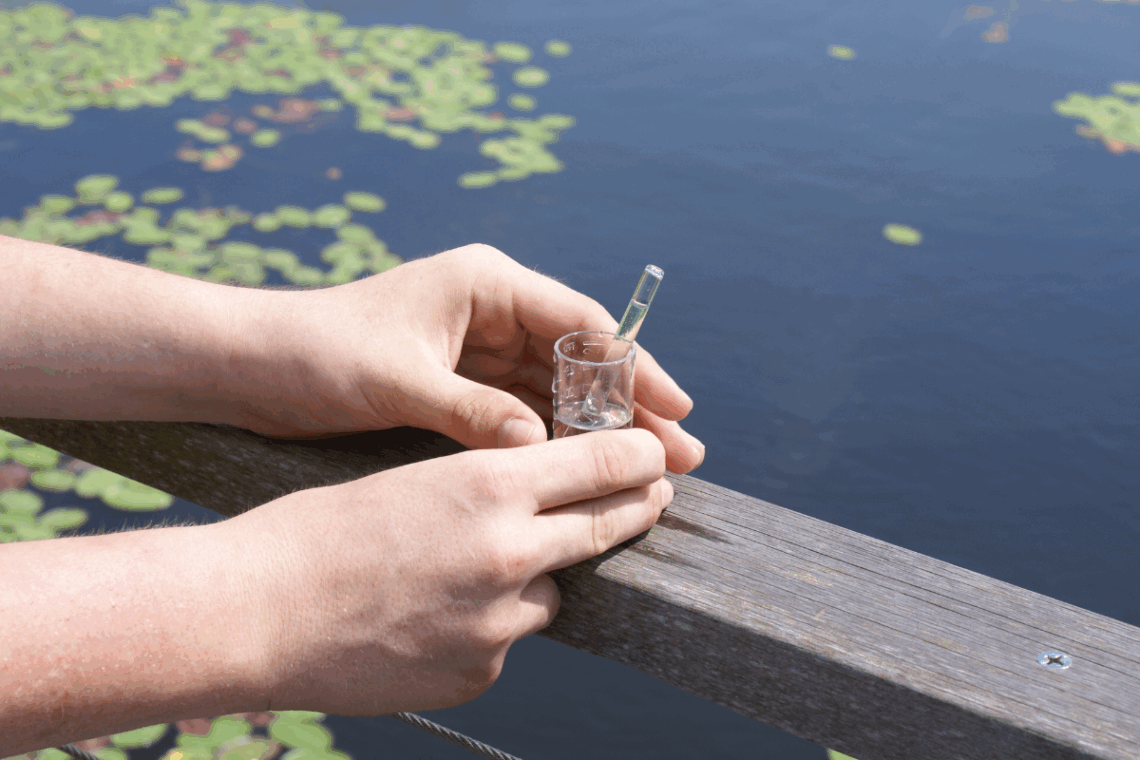
Regular testing is one of the best ways to keep your pond healthy and balanced. It’s a good idea to jot down your results each time. Keeping a simple log helps you spot trends and pick up on any early signs of trouble before they affect your fish or plants. Staying consistent makes all the difference when it comes to preventing bigger problems later on.
Understanding Pond Water Quality
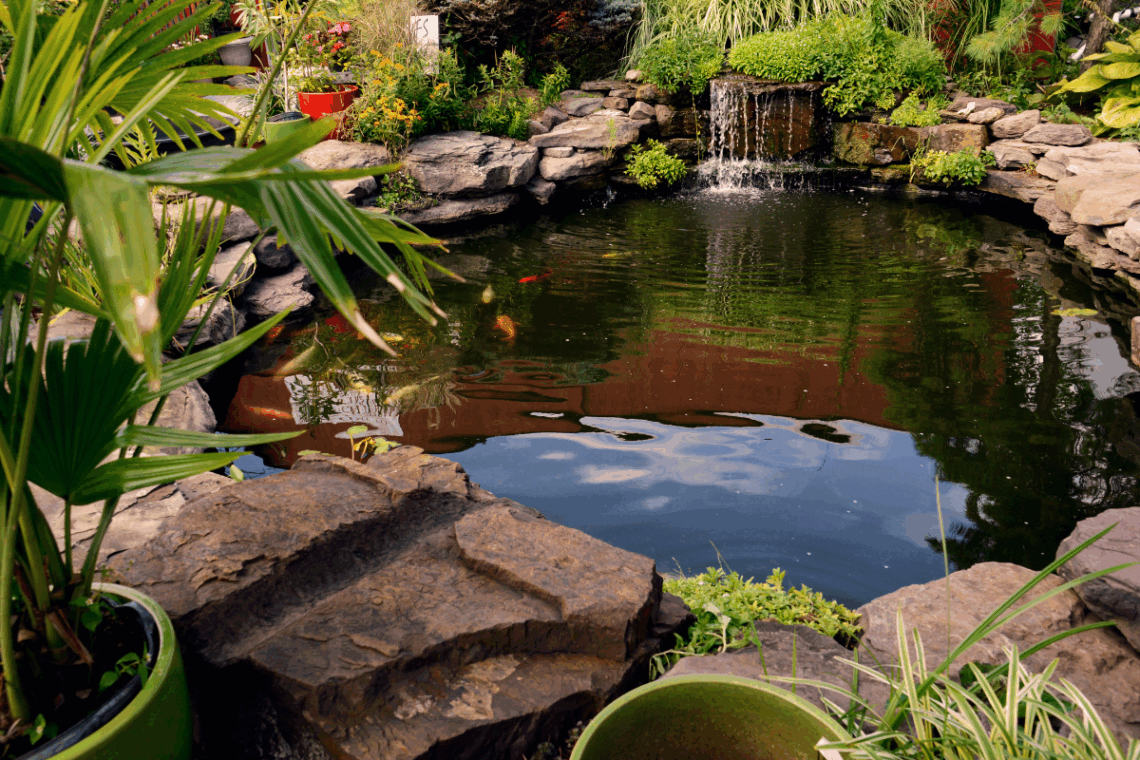
If you want your pond to stay clear, clean, and full of life, understanding your pond’s ecosystem is essential. From fish health to plant growth, what’s in your water affects everything.
At Ponds by Michael Wheat, we regularly test and treat ponds of all shapes and sizes. Whether you’re tackling green water or sluggish fish, or simply want to keep things ticking over smoothly, checking the right water parameters can make all the difference.
The Nitrogen Cycle (and Why It Matters)
One of the most important processes in any pond is the nitrogen cycle. It sounds technical, but here’s what you need to know:
- Ammonia, produced from fish waste, uneaten food, and decaying plant matter, builds up in the water as these materials break down.
- Ammonia is toxic to fish, even in small amounts.
- Luckily, beneficial bacteria in your pond convert it into nitrite and then into nitrate, which is much less harmful and can be absorbed by plants.
This process keeps your pond water safe. But if the cycle gets disrupted, ammonia and nitrite can quickly build up – leading to sick fish or poor water quality. That’s why it’s so important to test regularly, especially if you notice any changes in your pond or any signs of new pond syndrome.
pH Levels and Hardness
Your pond’s pH tells you how acidic or alkaline the water is. A neutral reading of 7 is ideal for most ponds, though slightly above or below is often fine too.
Then there’s water hardness, which simply means the amount of minerals in your water, particularly calcium and magnesium. This is split into:
- GH (General Hardness): Important for healthy fish and plants.
- KH (Carbonate Hardness): Helps stabilise pH and supports the bacteria that fuel the nitrogen cycle.
If KH (particularly calcium carbonate) drops too low, it can lead to pH swings and stall the biological filtration your pond relies on. A common trick is to add baking soda (about 1 cup per 1,000 gallons) or place natural stones in the water to boost KH.
A good pond water test kit will give you clear readings for pH, KH, and GH, keeping your pond on track.
Oxygen and Aeration
All aquatic life needs oxygen, from your fish and frogs to the bacteria working behind the scenes. Oxygen gets into your pond water through plant photosynthesis, flowing features like waterfalls, or mechanical aerators.
But here’s the catch: plants stop producing oxygen at night. That’s why ponds with poor circulation can run low on oxygen when it’s needed most. Regular testing and proper pond aeration keep things balanced and your pond life happy.
Phosphates
Phosphates are another one to watch, especially in older, established ponds or heavily stocked ponds. Phosphates come from tap water (treatment facilities use them to reduce the concentration of heavy metals), uneaten fish food, and broken down plant matter.
They can become harmful, especially for aquatic life, as they slow down the fish’s ability to take in oxygen. Using a good filter, feeding sparingly, and staying on top of water tests helps keep them under control.
A Note on Treatments
If you’re using water treatments, always check that they’re pond-safe. Some tap water contains chlorine, which needs neutralising before it hits your pond. Others can upset the natural balance if they’re too harsh.
We recommend using treatments like Blanket Weed Gone that work with your pond’s biology, not against it. If you’re unsure, we’re always happy to advise or come and take care of it for you.
3 Simple Ways to Prevent Water Problems
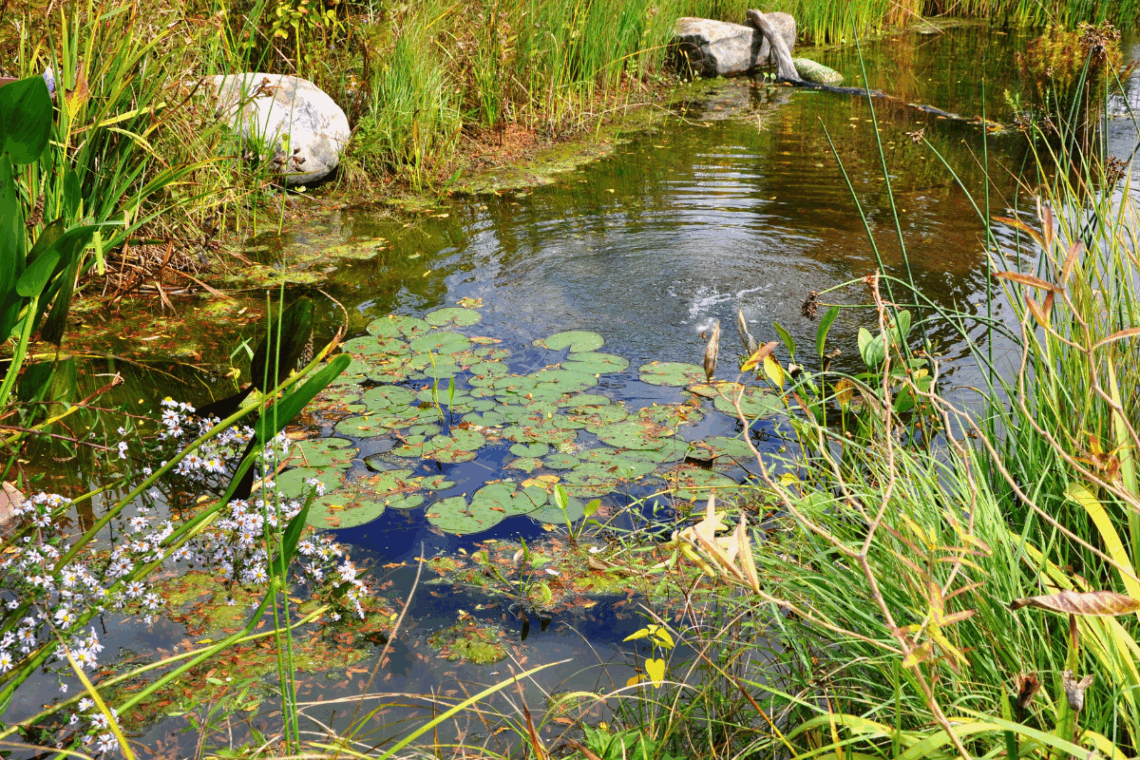
Keeping your pond in top shape doesn’t have to be complicated. With the right mix of preventative measures, natural care, regular checks, and a few handy tools, you can stop most issues before they start.
1. Support the Pond’s Natural Balance
Let your pond’s ecosystem do the heavy lifting. A good biological filter encourages friendly bacteria that help break down waste and keep ammonia levels and nitrite levels in check. Adding pond plants is another great move, they soak up excess nutrients that would otherwise feed algae.
Keep an eye on your KH levels (carbonate hardness), too. It helps ensure a stable pH and plays a big role in overall water health for plants, fish, and other aquatic life.
2. Be Careful with Treatments and Top-Ups
Sometimes, you’ll need to use a water treatment, whether it’s to fix the pH or reduce toxicity and hardness. Products that adjust pH or target specific mineral imbalances must be used according to manufacturer recommendations to avoid harming the pond’s inhabitants.
Doing a partial water change now and then is a simple fix for many common issues, like too many nutrients or murky water. If you use fertilisers around your pond, choose wildlife-safe options to maintain a healthy pond environment and avoid harming your aquatic life.
3. Get the Setup Right
Your pond’s layout matters more than you think. A fountain, waterfall or even a small aerator can add oxygen to the water, helping fish breathe and supporting those all-important bacteria.
If your pH tends to drop, adding a bit of limestone can help balance things out naturally. And don’t forget your filtration system, keeping it well maintained helps stop waste building up and keeps everything running smoothly.
Final Thoughts on Pond Water Testing
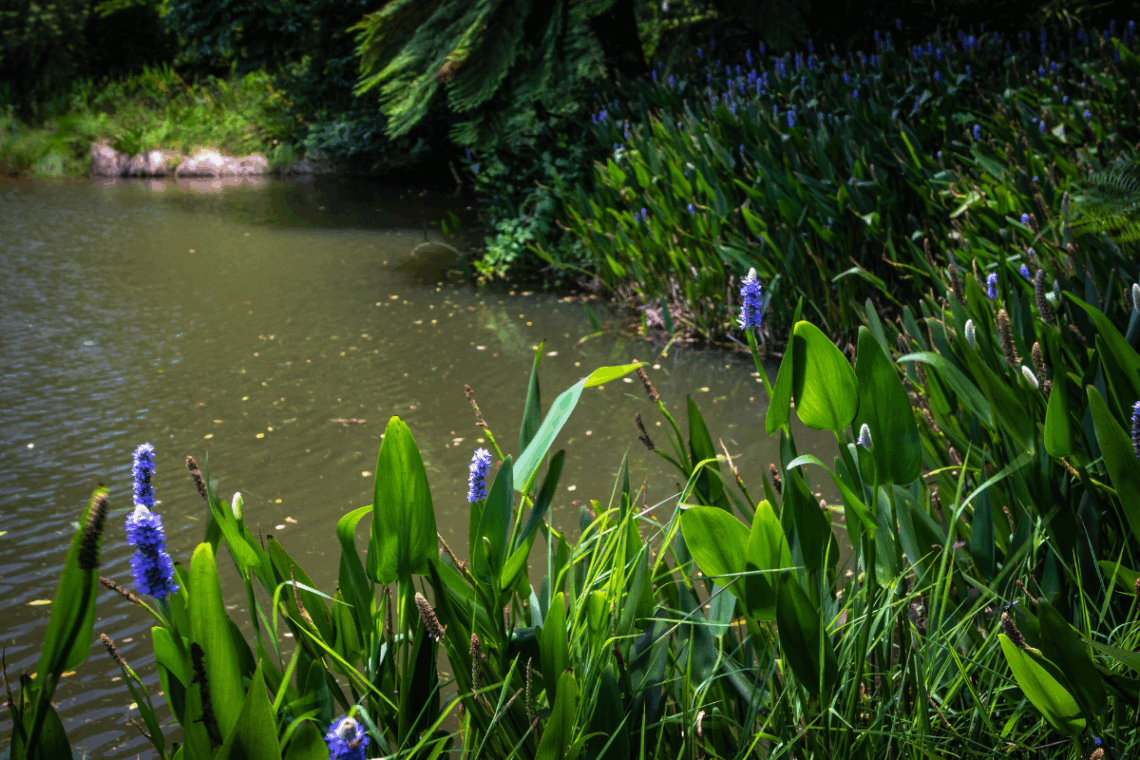
Keeping your pond healthy doesn’t have to be complicated; it just takes a little consistency. Regular testing helps you stay ahead of problems like algae blooms, low oxygen, or harmful bacteria.
If water quality slips, it can quickly affect your pond’s healthy ecosystem. That’s why it’s so important to maintain balance by adding fresh water when needed, keeping filters clean, and monitoring biological conditions.
Need Help With Your Pond?
Not sure where to start? Or feel like it’s all a bit overwhelming? We’re here to help.
At Ponds by Michael Wheat, we offer expert pond maintenance services, tailored water testing, and long-term solutions to help your pond thrive season after season.
Get in touch today and let us take the stress out of pond care.
Frequently Asked Questions
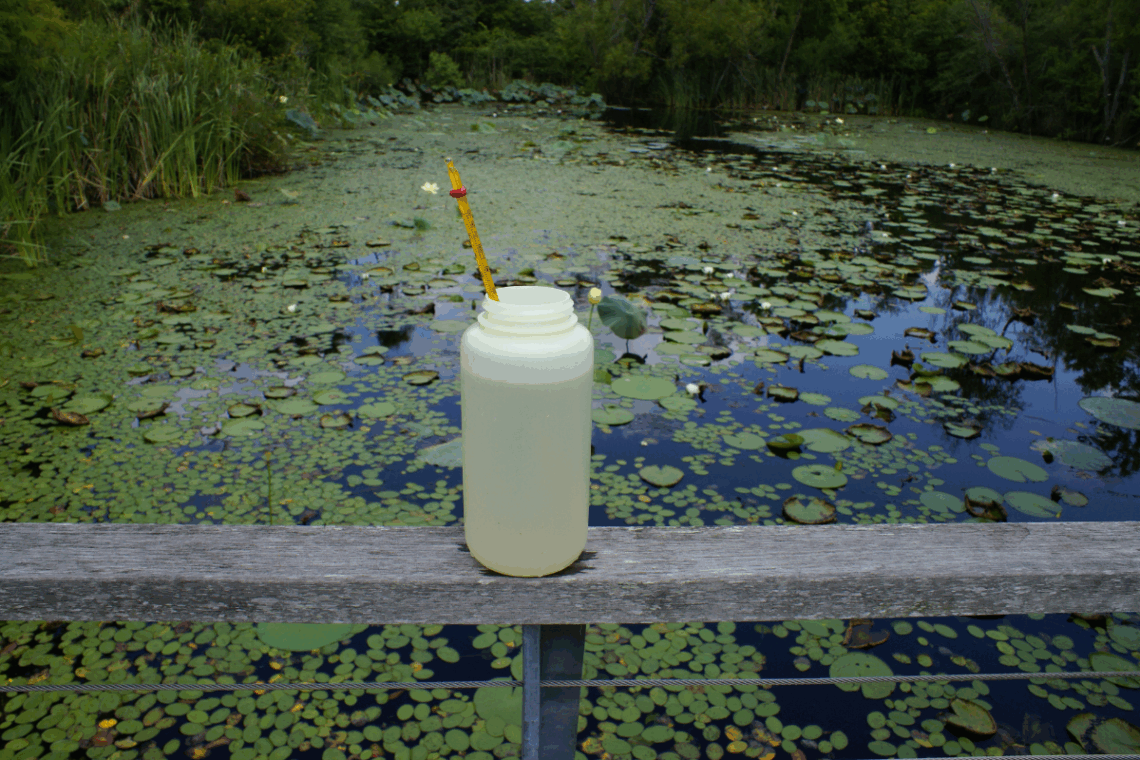
1. How can I tell if my pond water is healthy for fish and wildlife?
The best way is to keep an eye on a few key things, mainly the pH, ammonia, nitrites, nitrates, and dissolved oxygen levels. These are the building blocks of good water quality. Also, if the water turns green, that’s usually a sign of too much single-celled algae.
2. How often should I test my garden pond water?
We recommend doing a basic check once a week, especially during the warmer months when things can change quickly. Focus on the essentials like pH, ammonia, nitrites and nitrate levels; these give you a good snapshot of how your pond is doing.
3. Can I test for harmful bacteria in my pond?
Yes, but testing for harmful bacteria is a bit more specialist. You’ll need pond test kits that can pick up bacteria like E. coli or Salmonella, or you may need to send a sample off to a lab for proper testing. These tests are more common in swimming ponds or if you’ve had any health concerns.
4. Are swimming ponds safe to use?
When properly maintained, swimming ponds can be a safe and enjoyable alternative to traditional pools. For a full breakdown of safety considerations, take a look at our guide: Are Swimming Ponds SAFE to swim in?